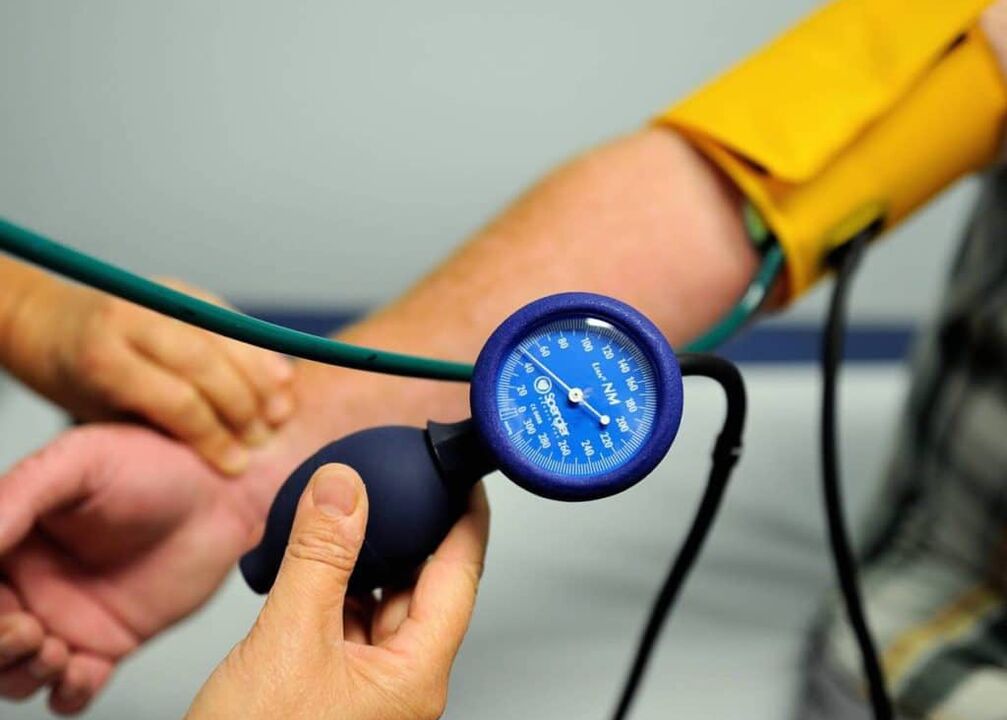High blood pressure in hypertension is the main criterion for chronic hypertension, which requires urgent treatment. It should be taken into account that small fluctuations in blood pressure may occur during the day; this is normal. But if the elevated level remains at a high level for a long enough time or the pressure fluctuates with very large differences, then this is hypertension.

What is the blood pressure of a hypertensive patient?
Blood pressure in humans is expressed by two indicators: the upper or systolic and the lower (diastolic). In an adult, normal blood pressure should range from 120/80 to 129/84 mmHg. Symptoms that indicate illness:
- headaches in the back of the head;
- insomnia;
- dizziness;
- faint?
- pain in the region of the heart;
- goosebumps or circles before the eyes.
For hypertensive patients, the criteria vary according to the stage of the disease, as shown in the table:
| Degree of hypertension | Pressure readings mm Hg. Art. | Symptoms | Treatment |
|---|---|---|---|
| Lightweight boxer | From 140 to 90 to 160 to 100 |
|
|
| Moderate | 160/100—180/110 |
|
|
| Heavy | Above 180/110 |
|
|
Hypertension is more dangerous than low blood pressure. You should also be careful with the pathology due to the fact that in the initial stages there are practically no symptoms. Delayed detection of the problem threatens the disruption of internal organs and prolonged treatment.
How to measure to get a reliable result?
Blood pressure readings must be done correctly; the accuracy of the result will depend on this. Basic rules for taking measurements:
- Take measurements before meals, 3 times a day.
- The patient's hand should be at heart level.
- The cuff from the device should be in contact with the skin, but not too tight, so that the pointer can be placed between the cuff and the skin. You need to inflate the air quickly and deflate slowly.
- 30 minutes before the procedure, do not smoke, do not drink coffee, tea or alcohol.
- During the measurement, do not talk or stretch your arm.
- It is better to take measurements on both hands. In this case, the difference between left and right should normally not exceed 10%.
Basic methods of prevention
For preventive purposes and to keep blood pressure normal, you must follow simple requirements:
- monitors body weight fluctuations.
- the amount of salt consumed should not exceed 5 g per day.
- Perform simple exercises daily.
- remove alcohol and nicotine from drinking.
- add fresh fruits and vegetables to your daily diet.
Correct treatment of high blood pressure
You can stabilize blood pressure and sometimes completely get rid of the disease, in various ways: traditional or medicinal. At home, you can lower your blood pressure with teas and tinctures. Medication should be used with extreme caution and after consultation with a physician. With some drugs, blood pressure drops too quickly. Medicines are divided into groups listed in the table.
| Drug group | Clues | Contraindications |
|---|---|---|
| ACE inhibitors |
|
|
| Sartans |
|
|
| Beta blockers |
|
Chronic lung disease |
| Diuretics |
|
Hypokalemia: long-term use of the drug removes beneficial substances from the body |
| FAST reaction |
|
Individual intolerance to the components of the drug |



























